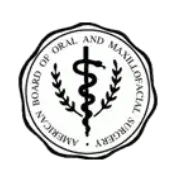Dental paresthesia: Nerve damage as a complication of wisdom tooth extraction or dental injection.
By: Animated-Teeth.com
Have you heard about Dental Paresthesia? Discover its signs, symptoms, causes, and treatment before you're at risk! The Woodview Oral Surgery Team
What is paresthesia?
Dental paresthesia is one possible postoperative complication of wisdom tooth removal, or in some cases receiving a dental injection.
It involves a situation where tissues or structures in or around the mouth (lip, tongue, facial skin, mouth lining, etc...) experience prolonged or possibly permanently altered sensation as a result of nerve trauma.
In most cases, the trauma has been caused by an event that has bruised, stretched or crushed the nerve. Less likely, it may have actually been severed.
a) Paresthesia and wisdom tooth removal.
In the case of oral surgery, a person's risk for experiencing paresthesia correlates with the position of their tooth in its jawbone, in relation to the location of surrounding nerves.
In situations where a nerve lies relatively close to the tooth being removed, or in surrounding tissues that must be manipulated during the extraction process, it may be traumatized.
What can cause this trauma?
Nerve damage can be caused by:
- The tooth itself as it's forced against the nerve.
- The instruments (forceps, elevators, drills) used to remove the tooth or the bone tissue around it.
- The instruments used to incise and retract the soft tissues surrounding the extraction site during the procedure.
Which nerves are usually affected?
Most cases of paresthesia occur in conjunction with the removal of lower 3rd molars (wisdom teeth) and, to a lesser extent, 2nd molars (the next tooth forward).
The nerves that frequently lie in close proximity to these teeth (and thus are at risk for damage during the extraction process) are:
- The mandibular (inferior alveolar) nerve. - This nerve runs the length of the lower jaw. It lies in the center of the jawbone at a level near the tip of the roots of the teeth. Towards its end, it gives rise to the mental nerve that branches out and runs to the lower lip and chin area.
- The lingual nerve. - This is actually a branch of the mandibular nerve. It runs on the tongue-side surface of the lower jaw and services the soft tissue that covers it. It also branches to, and provides sensory perception for, the tongue.
b) Paresthesia and dental injections.
Beyond surgical procedures, some cases of paresthesia are caused by routine dental injections.
What causes the trauma?
The nerve damage may be due to:
-
Direct trauma caused by the needle itself.
The largest gauge needle used in dentistry has a diameter of .45mm. In comparison, the nerves most frequently damaged are on the order of 4 to 7 times larger. For this reason, nerve damage, as opposed to severing, is typically the problem.
-
Hematoma formation.
The movement of a needle through soft tissues may rupture blood vessels, thus allowing the release of blood. Construction of the hematoma that then forms may place pressure on nerve fibers that pass through it.
- Neurotoxicity of the anesthetic. - The anesthetic is injected may cause localized chemical damage to nerve fibers.
Which nerves are usually affected?
In the vast majority of cases, the risk of paresthesia lies with injections used to numb up lower back teeth.
- The lingual nerve. - 70% of cases involve this nerve. (See above for a list of tissues it services.)
- The mandibular (inferior alveolar) nerve. - (See above for a list of tissues this nerve services.)
- The maxillary nerve. - While extremely rare, this nerve that services aspects of the upper jaw may be affected.
(Smith 2005) [reference sources]
Signs and symptoms of paresthesia.
Signs.
Paresthesia is a sensory-only phenomenon and not accompanied by muscle paralysis.
In most cases, the nerve damage is not identified during the dental procedure but instead as a postoperative complication.
Symptoms.
The patient will notice altered, diminished, or even total loss of sensation in the affected area. One or more senses may be involved (taste, touch, pain, proprioception or temperature perception).
The precise area affected is that service by the damaged nerve. In the case of the mandibular or lingual nerves, that means some aspect the person's lip, chin, mouth lining or tongue.
Other characteristics.
- For some people, the sensation may be tingling, numbness or "pins and needles", similar to the feeling they experience when having a tooth anesthetized for a dental procedure. The difference being that the sensation persists.
- While muscle function is not affected, the sensory changes experienced can be difficult to deal with. They may affect speech or chewing function, or interfere with activities such as playing a musical instrument.
- The patient's quality of life may be significantly affected.
Other characteristics involving dental injections.
On occasion, a person receiving a dental injection may experience an "electrical shock" sensation as the needle makes contact with the trunk of their nerve. (This would be most common with inferior alveolar nerve blocks, the type of injection used to numb lower back teeth.)
Experiencing this phenomenon is not necessarily an indication that paresthesia will occur.
- As many as 15% of people who do experience this sensation go on to experience some type of complication.
- 57% of people who do experience paresthesia also experienced the shock.
(Smith 2005)
How long does the numbness/sensory loss last?
For those patients who are affected, one of 3 scenarios will play out.
- In most cases, the paresthesia is transient, resolving on its own after just a few days or weeks.
- In some cases, the condition is best classified as being persistent (lasting longer than 6 months).
- For a small number of cases, the loss is permanent.
See below for details and statistics.
Evaluating a patient's risk for paresthesia.
A) Location, location, location.
As discussed above, one primary risk factor for paresthesia is simply the proximity of the tooth being extracted to nearby nerves (and therefore increased the likelihood that they'll be traumatized during the extraction process).
Identifying risk using x-rays.
In the case of the mandibular nerve, the dentist's pre-treatment x-ray evaluation of the tooth can give a hint as to what configuration exists.
The outline of the canal inside the jawbone that houses the mandibular nerve can usually be seen on x-rays. And its apparent closeness to the roots of the tooth planned for extraction can be evaluated.
One difficulty with this technique lies in the fact that the typical x-ray image is just a 2-dimensional representation (a flat picture) of a 3-dimensional configuration. And for this reason, only an educated guess can be made about the precise relationship that exists.
A more definitive picture can be gained using 3-D imaging, such as a Cone Beam CT scan. This technology is becoming more and more commonplace in the offices of oral surgeons, and even some general practitioners.
Risk and impaction type.
A tooth's precise orientation in the jawbone plays a role in paresthesia risk in two ways: 1) Tooth-nerve proximity. 2) It can greatly affect the surgical difficulty (and thus level of trauma) associated with removing the tooth.
As general rules:
- Any lower wisdom tooth that's angled or positioned toward the tongue-side of the jawbone places the lingual nerve at greater risk.
- Lower full-bony impactions, especially horizontal and mesio-angular ones (pictures), are the type of extraction most likely to result in trauma to the mandibular nerve.
B) Surgical factors.
Research has demonstrated that: 1) The dentist's level of experience, 2) The surgical technique they use, and 3) The amount of time they require to complete the extraction process - will each play a role in the patient's risk for experiencing paresthesia.
This is a primary reason why general dentists refer wisdom tooth extractions they anticipate will be challenging to an oral surgeon.
C) Age as a risk factor.
After the age of 25, a person's risk for experiencing paresthesia is generally considered to increase.
Relatively "older" patients (those over the age of 25, and especially over the age of 35 years) usually have wisdom teeth that have more fully formed roots and denser surrounding bone. Both of these factors tend to increase the difficulty of performing the tooth's extraction and thus raise the level of trauma involved.
This is one reason why asymptomatic full-bony impacted wisdom teeth that show no sign of associated pathology are often left alone in people over the age of 35.
C) Dental injections.
The vast majority of cases of paresthesia resulting from dental "shots" involve those used to numb up lower back teeth (specifically inferior alveolar nerve blocks).
But as opposed to oral surgery where the patient's risk can be evaluated during their procedure's planning stage, there's no way for a dentist to anticipate beforehand which dental injections might result in this complication.
Paresthesia statistics.
a) As related to wisdom tooth extraction.
In a review of research studies evaluating paresthesia after wisdom tooth extraction, Blondeau (2007) found reported incident rates ranging from 0.4% and 8.4%.
One large study (Haug 2005) evaluated the outcome of over 8,000 third molar extractions. It found an incidence rate of less than 2% for subjects age 25 years and older (as mentioned above, an age group that's relatively at-risk for this complication).
b) As related to dental injections.
It's been estimated that roughly 1 out of 27,000 inferior alveolar mandibular blocks (the type of dental injection most used to numb lower back teeth) will result in paresthesia. (This type of injection is the most common culprit.)
At this rate, it's been estimated that during the course of their career, a dentist could expect to have 1 to 2 patients experience this complication. (Smith 2005)
How long does paresthesia last?
In most cases, a patient's paresthesia will resolve on its own over time. This can, however, take several months to over a year. In some cases, a person's sensory loss is permanent.
a) As related to wisdom tooth extraction.
Spontaneous recovery.
In cases associated with wisdom teeth, Queral-Godoy (2005) found that most recoveries took place within the first 3 months. At 6 months, one-half of all of those affected experienced a full recovery.
Persistent paresthesia.
This state is typically classified as an altered sensation that lasts longer than 6 months.
Pogrel's (2007) review of studies evaluating complications associated with wisdom tooth removal found reported incidence rates of persistent paresthesia ranging between 0% and 0.9% for the mandibular nerve and 0% and 0.5% for the lingual nerve.
b) As related to dental injections.
Spontaneous recovery.
In 85 to 94% of cases, spontaneous complete recovery typically occurs within 8 weeks. Recovery for the mandibular nerve (which is harbored within rigid jawbone) is possibly more likely than for the lingual nerve (which lies in movable soft tissue).
Persistent paresthesia.
Symptoms lasting more than 8 weeks are less likely to fully resolve.
(Smith 2005)
Treating permanent paresthesia.
Testing/mapping paresthesia.
As a way of documenting the extent of a patient's condition, both initially and as recovery occurs, the affected area can be mapped.
To do so, different types of sensory tests are performed, and those regions (lip, facial skin, tongue, etc...) that respond with no or altered sensation are recorded.
The mapping may include:
- Light Touch - A small cotton ball is brushed against the skin to see if it can be felt and if the patient can discern the direction of the ball's movement. Moist tissues (like the lining of the mouth) can be difficult to evaluate with this test.
- Sharp vs. dull discrimination - Areas are prodded with a pin or other sharp-pointed tool. The patient is asked if they can feel a sensation, and if so whether it feels sharp or dull. A comparison to the same location on the patient's unaffected side is made also.
- Two-point Discrimination - A pair of calipers having a pair of sharp points is systematically touched to the affected area, using various distance settings. The patient is asked if they are able to feel this contact as one or two individual points.
- Taste stimulation - Cotton balls soaked in saline (salt), sugar (sweet), vinegar (sour) or quinine (bitter) solution are drawn across the side of the tongue to see if a taste response is triggered.
Testing frequency.
Some sources suggest that evaluations should be conducted every 2 weeks for 2 months. Then every 6 weeks for the following 6 months. After that, every 6 months for 2 years, followed by yearly evaluation as long as the full recovery has not occurred. (Smith 2005)
Surgical repair.
For those who experience persistent or permanent paresthesia, surgical repair may be possible.
In most cases, this attempt is not taken until 6 to 12 months after the original injury (so to allow time for a repair to occur on its own if it will). The surgery can, however, be performed at an even later time frame.
Repair success rates.
Reported results for surgical intervention vary widely (Pogrel, 2007). Success rates appear to range between 50 and 92%, however, some reported successes only involve partial recovery. Even if just partial recovery was achieved, many patients considered the attempt worthwhile.
Much less information exists for the repair of paresthesia resulting from a dental injection. In some cases, long-term drug therapy has been used to help patients manage their condition.
Source: https://www.animated-teeth.com/wisdom_teeth/t7-wisdom-tooth-paresthesia.htm?






5 Stars
based on 48 reviews
5 Stars
based on 15 reviews
5 Stars
based on 11 ratings